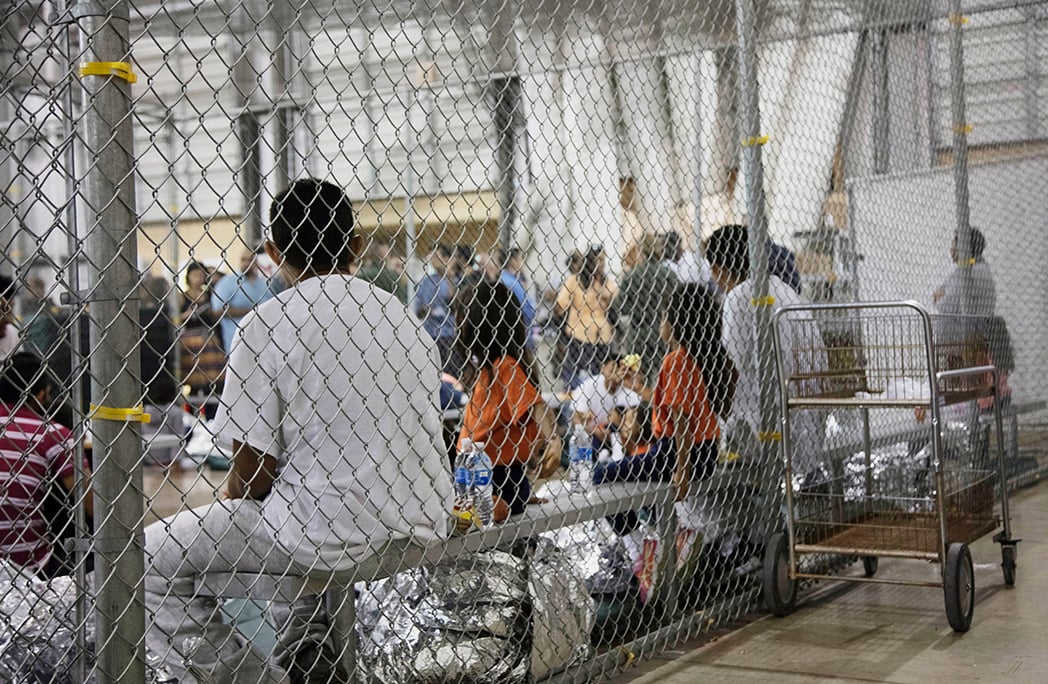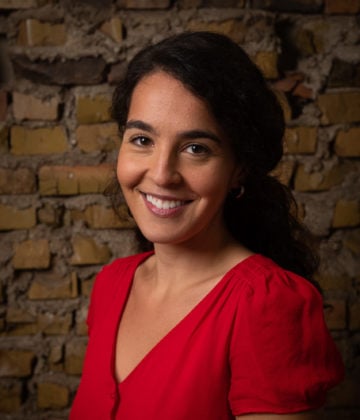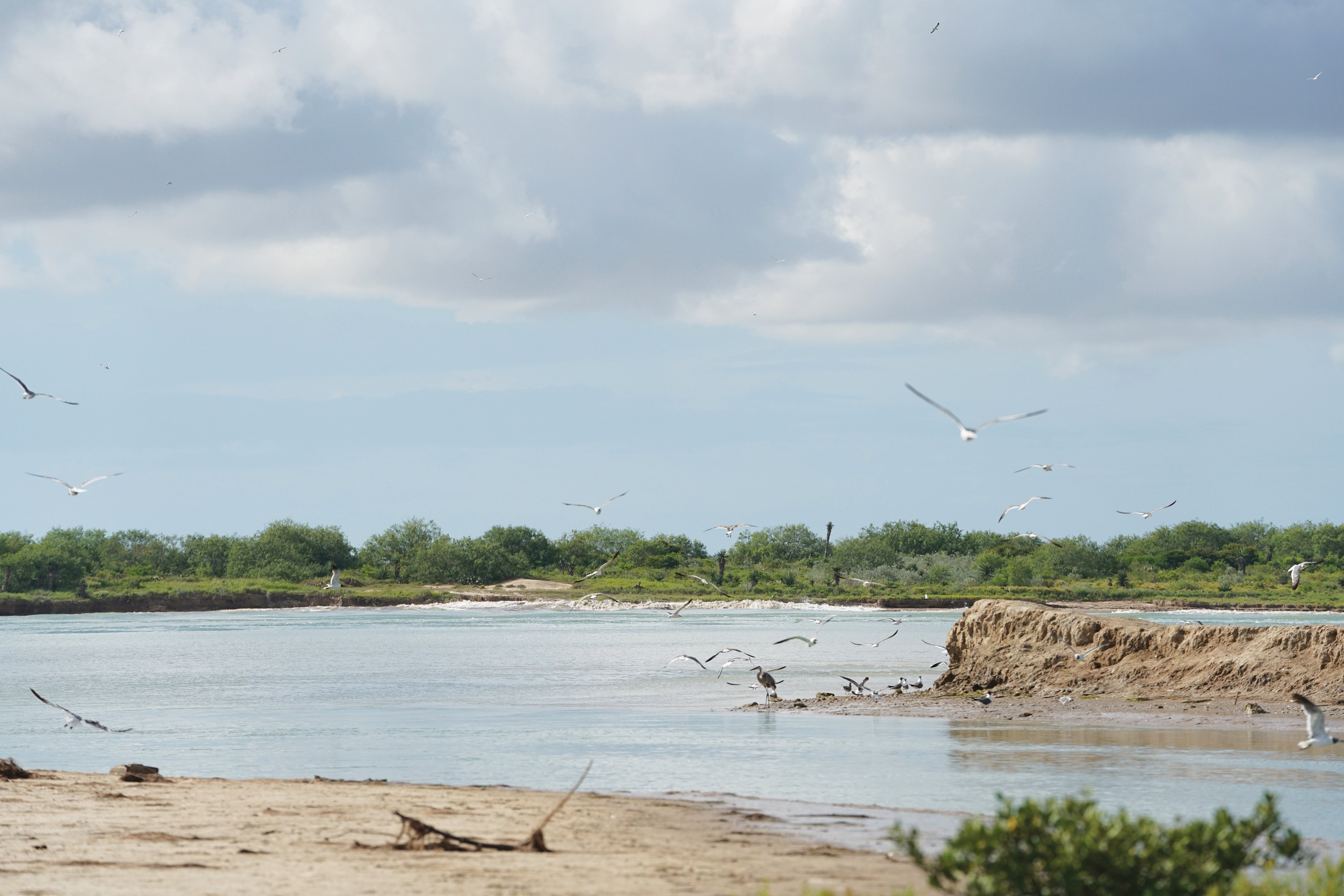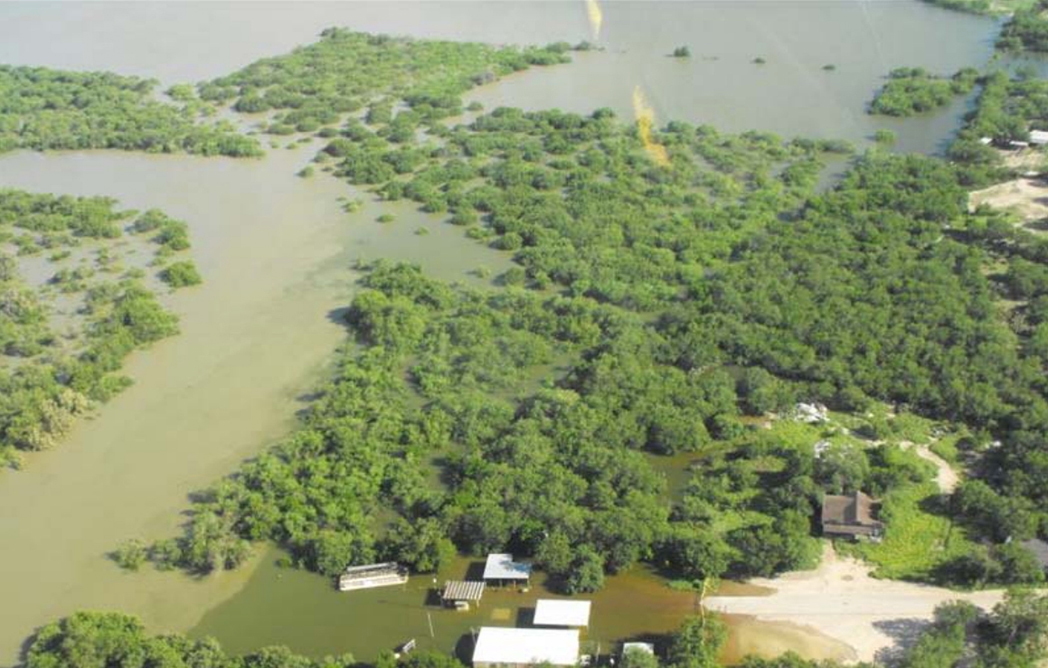
Doctor Details ‘Insane,’ ‘Demoralizing’ Conditions for Kids at Texas Migrant Detention Center
A pediatrician talks to the Observer about her recent visit to a South Texas detention facility.

Above: Migrants sit in one of the cages at the CBP detention facility in McAllen, Texas.
Kids sleeping on the ground with lights on at all hours, day and night. Teen moms lacking sufficient drinking water and struggling to breastfeed their babies. Infants drinking from dirty bottles. No access to handwashing; sometimes, no showers for weeks.
These are some of the conditions at the Border Patrol’s Ursula detention center in McAllen, as detailed by Brownsville pediatrician Dolly Lucio Sevier. On June 15, Lucio Sevier accompanied attorneys who were visiting Ursula as part of a larger look at whether the U.S. government may be violating the law by keeping kids in unsanitary temporary detention facilities for longer than 72 hours, amid an unprecedented number of migrant families and kids arriving at the border. Last week, an Associated Press report on horrific conditions at the Clint facility outside El Paso led to an outcry from the public and elected officials, but reports from other facilities indicate this is not an isolated problem. Spokespeople from Customs and Border Protection (CBP), which oversees Border Patrol, did not immediately respond to a request for comment.
In a medical report first obtained by ABC News, Lucio Sevier wrote that the conditions in Ursula, the largest CBP processing facility in the country, “could be compared to torture facilities,” citing “extreme cold temperatures, lights on 24 hours a day, no adequate access to medical care, basic sanitation, water or adequate food.” Some kids she met had already been in custody for weeks; all showed evidence of trauma. Meanwhile, the lack of basic sanitation “is tantamount to intentionally causing the spread of disease,” Lucio Sevier wrote. “I question whether there are appropriate infection control measures in any of the CBP Processing Centers, and thus question whether this is an appropriate space to be holding any infants and children.” She added: “It is obvious that the dignity and well-being of children is not even an afterthought in the design of the center.”
Lucio Sevier spoke to the Observer this week about her experience at the facility.
Why did the attorneys bring you on the visit?
There were multiple attorneys earlier in the week who had seen children [at Ursula] that they believed were very sick. They described them as “listless.” Listless is a pretty specific medical term, which means you’re near death, you’re hypotensive, you look awful. I’m not sure if they were truly listless, but they at least looked pretty bad. The attorneys were concerned they were not getting adequate medical care, and that’s why they wanted me to come in.
[A local pediatrician] kind of pulled all her cards to get the kids out of there. So the specific kids they were worried about were no longer in the facility when I went to visit. I think there were five or six kids that had been transferred [to the hospital] before I went on Saturday morning.
What stood out at the facility as most concerning?
Every single person I spoke to [was] denied access to handwashing even after bathroom use. They said the sinks in the bathroom had no running water. I couldn’t believe they have nowhere to wash their hands. The shower range was every other day all the way up to never in 24 days, that was just insane. That’s the only time they get to brush their teeth, when they shower, then their toothbrush gets thrown away. Between that, there was no handwashing, no anything, no hand sanitizer. Every person with a formula bottle said they had nowhere to wash that. If they wanted to even rinse their hands or rinse formula bottles, they would bring drinking water to the sink and try and rinse there. The formula bottles not being able to be washed was completely absurd. That’s the kind of thing I’d call [Child Protective Services] for on a patient in my office.
“Of the 21 [infants] I examined, two-thirds had respiratory illnesses.”
The other thing which has not been covered in the news much is breastfeeding moms. All they got was a liter and a half of water a day, which is holding them all mildly dehydrated. Average size adults need 2 liters a day, breastfeeding moms need three liters a day. There were six breastfeeding moms I spoke to; only one of them reported adequate milk supply. The other five reported inadequate milk supply; they are not getting enough water and food really to feed a baby. There was a baby that was losing weight, breastfeeding mothers that were saying they were losing weight.
And there was really no adequate nutrition for infants. They had formula, which they did have free access to (obviously with the dirty bottles), they had breast milk. After that there’s basically the adult solid food, which it seemed like it was a burrito for most meals. One father reported the rice in the burrito was raw and was really inedible. So basically if you had a 6- through 12-month-old, when they really can’t chew, there’s nothing but the formula and breast milk. Those children are at risk for iron deficiency and anemia, because that’s inadequate nutrition.
There was water besides the three 500-ml bottles they’d get each day [with meals], but everyone reported that water was foul. I will say South Texas tap water is pretty bad, it kind of tastes chlorinated. I don’t know if it’s just that, but no one has been drinking it. Some would use that water to wash their hands; none used the water to rinse formula bottles because they thought it would actually harm their child. And they have reason to be fearful, [since] we’re not showing we take care of them in other ways.
It’s notoriously difficult to get inside these facilities. Can you describe what you saw?
The outside of the building just looks like a big warehouse — it has fencing around it with some screening. Inside was a regular little lobby that went to some offices. The one we were put in to interview people was an office with about 15 computers and desks. I will mention: Every single one of those desks had hand sanitizer and Clorox wipes. There was a regular bathroom that was totally clean and totally normal.
That’s all that I saw. My impression is that beyond that is just one huge open warehouse space that has those fenced-in areas that they seem to separate by demographics. They’ll put all the fathers with a female child in one cage and all the fathers with male children in another cage. With the mothers, I don’t know whether they separate those children by sex or not. They described sometimes being able to sleep outside the fenced-in area, because of crowding. They’d say, “I got to sleep outside,” but they meant outside of their little cage.
I don’t think there were any windows, but I didn’t ask specifically. I didn’t see any.
“It is obvious that the dignity and well-being of children is not even an afterthought in the design of the center.”
It seemed like most of the day they spent just in those areas. [There is] day care, which is where the young kids that are truly unaccompanied are. A Coast Guard officer told me they had a contracted day care, then overflow was the Coast Guard officers who were helping them out. Those kids were the only clean kids. Those kids were getting a bath every other day, she thought. They had some toys; those kids slept on mats on the floor. But she did also report that in the day care, the lights were on 24 hours a day. Which again, it’s absurd for the adults, but it’s completely absurd for the infants. It seemed like those kids were totally traumatized but were completely attached to the day care workers, to the Coast Guard officers.
Tell me about the people you met.
I saw 39 individuals — one adult, and all the others were minors. Most were teen moms with infants; I was going down the list of youngest to oldest, to try to see all the infants because they have the potential to be sickest. Three were truly unaccompanied at that young age: two 3-year-olds and a 2-year-old that were in the day care setting.
Of the 21 [infants] I examined, two-thirds had respiratory illnesses. Two, I was very worried about. Two had other medical issues that I thought needed to be seen, one had an ear infection that was still draining. For all of them I wrote a physical exam note, but for those four, I printed two copies, one for the parent to keep, one for them to take to whatever the medical personnel in the facility was, which was not clear to me.
“That’s the kind of thing I’d call [Child Protective Services] for on a patient in my office.”
Most of them reported free access to care, except the adult. He had asked for medical attention [for his 15-month-old nephew] multiple times the week prior and was denied. [According to Lucio Sevier’s review, the man and his nephew had been in detention for 21 days and neither had the chance to bathe during that time.] He said [his nephew] had a fever for two days the week prior. They would go up to an official and said they would touch him and say he’s not hot, and send them back.
When I saw him, which sounded like it was 10 days into the illness, he still had not been seen. He seemed very tired, was wheezing, in moderate respiratory distress, he was the one I was most worried about. How much was done, I don’t know. My concern was he was getting more tired. The [uncle] said he’s sleeping a lot more now, he’s more lethargic now, he’s breathing funny now. He was the sickest one.
How did your experience compare to what you expected?
I’ve read about some stuff in Clint, and I do feel like that was worse, maybe because [Ursula has] the day care. But the [lack of] soap is unfathomable. It seems like a tiny thing but it’s completely insane, especially if they have a breakout of influenza. And a lot of these people reported having influenza.
There are some systematic things that could change that are really easy, like having hand sanitizer, dimming the lights at night, very basic things. But I think a lot of the experience and the trauma depends on the person showing up to work every day. The Border Patrol officers, I think some of them are really compassionate. I think the culture in general is not compassionate. The officer from the daytime was great; the one from 3 to 5 pm was awful. He was like, “Bodies have been identified.” That’s something I’ve heard: that Border Patrol officers use the word ‘bodies’ a lot, when they’re talking about living humans.
When you put the words “torture facility” in the media … people are like, “Come on,” they roll their eyes. What I mean is, there are a lot of ways to demoralize and torture someone, right? These are refugees. They are teenage women with infants who are fleeing their countries due to persecution. Due to the circumstances leading up to their arrival, they do not come with the ability to face even the slightest trauma. [Then] you put them in a room, you don’t let them clean themselves, you don’t let them clean bottles for their children, you have the lights on 24 hours a day, you don’t let them sleep well. They reported that the mats they sleep on are taken away at some point between 3 and 5 am, God knows why. I think all that is totally demoralizing, and if you’re there for three weeks, that can make you really kind of go crazy, and can be torturous.
This interview has been edited for length and clarity.


